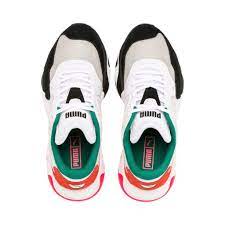Can bad design be a great problem?
What is more valuable: innovative technology or convenience of use and durability? I may say the latter, though companies are usually neglecting this fact. We can see some strange and completely unacceptable devices pretty often, trying to enter the market and conquer the customer. Fortunately, people are relying on some feedback from testers and rarely do get caught surprised, for example with the Samsung Galaxy fold series after a day of use. I explore the market and choose the best suitable for me with an acceptable price, but I’m not sure that others have the same attitude which can lead to disappointment.
Today, I will talk
about the situation with the sensational design from Puma a couple of years
ago. A pair of designer trainers have sparked a wave of controversy after the
shoe design was said to bear an uncanny resemblance to Adolf Hitler.
The toe and tongue
of the Puma 'Storm Adrenaline' shoes, which retail for £75 in the UK or $44.99
in the US, have been likened to the slicked hairdo and mustache of the Nazi
dictator. It's a coincidence that has created a surge of interest on social
media, with one user declaring the shoes are an 'eight out of 10 on the Hitler
scale. Among the comments circulating on the networks, many users have recalled
that the company founded by brothers Rudolf Dassler and Adolf “Adi” Dassler
(who later created Adidas), supported the Nazi regime and they were members of
the German National Socialist Party.
On the
controversy, some devices can benefit users not only with convenience or their
functionality but in health issues.
For example,
Google's incredibly futuristic, and potentially life-changing, smart contact
lens has taken a step towards breaking out of the concept stage after a patent
was awarded that seemingly paves the way for the device to become a real-life
product. Google's clever contact lens is just a prototype for now, but it could
eventually save lives. It uses miniature sensors and a radio antenna thinner
than human hair to track a wearer's blood glucose levels. It could be
especially useful for diabetics, as, using an app on their smartphones, they
could monitor their glucose levels in real-time, making sure that they don't
drop below a certain level. Google struck a deal with drug maker Novartis in
July 2014 to help make the lens. "We are looking forward to working with
Google to bring together their advanced technology and our extensive knowledge
of biology to meet unmet medical needs," said Novartis CEO Joseph Jimenez at
the time. "This is a key step for us to go beyond the confines of
traditional disease management, starting with the eye."
So, to conclude
bad design or usability can happen not only to small companies, who do not have
enough experience and resources to create a good product. Such large
influencers of the clothes industry can also have lots of problems with their
reputation and receive even a boycott.


Коментарі
Дописати коментар